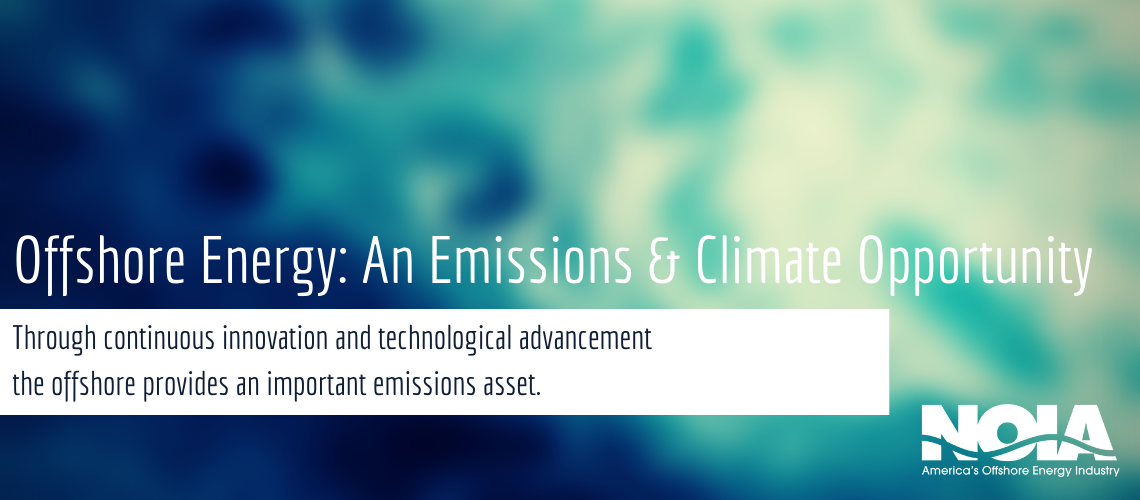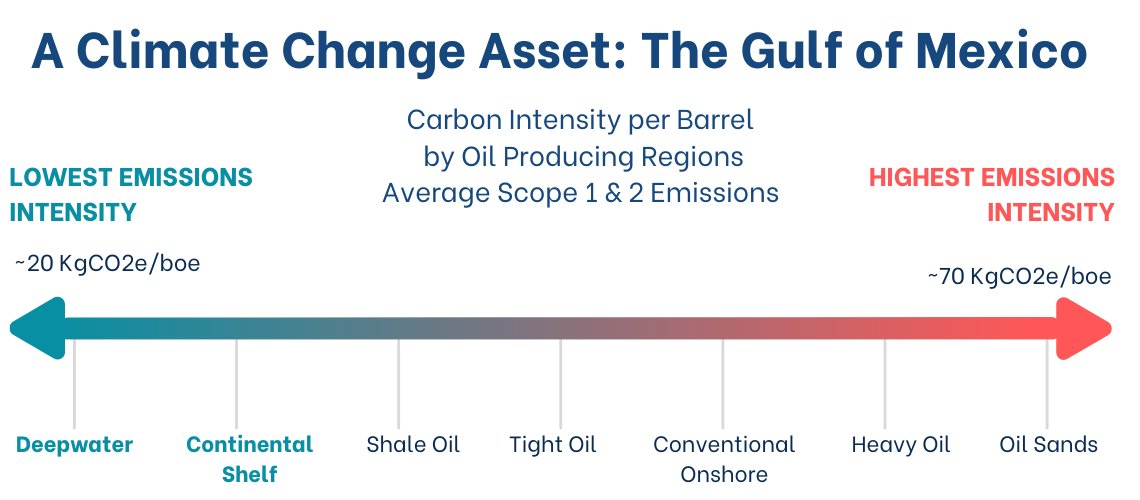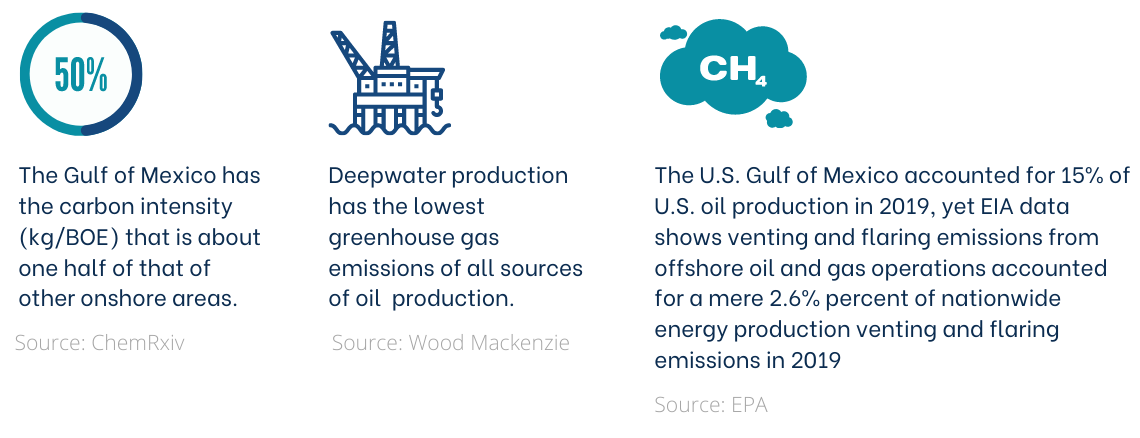
The NOIA Climate Change Principle:
NOIA and its member companies commit to a collaborative approach with all stakeholders in providing solutions that balance economic, environmental and energy needs for society. We contribute to the advancement of principles of innovation, conservation, efficiency, resiliency, mitigation and adaptation that must be part of a systematic approach to addressing the climate challenge.
 Overall, the Gulf of Mexico has a carbon intensity that is about one-half the carbon intensity of other onshore areas. Deepwater, which accounts for 92% of all Gulf of Mexico production, is the lowest source of GHG emissions of all oil producing regions. Not to mention, without the Gulf of Mexico, increased transportation of oil to U.S. consumers would lead to additional emissions.
Overall, the Gulf of Mexico has a carbon intensity that is about one-half the carbon intensity of other onshore areas. Deepwater, which accounts for 92% of all Gulf of Mexico production, is the lowest source of GHG emissions of all oil producing regions. Not to mention, without the Gulf of Mexico, increased transportation of oil to U.S. consumers would lead to additional emissions.
 The Gulf of Mexico Reduces GHG Emissions
The Gulf of Mexico Reduces GHG Emissions
During the Obama Administration, the Bureau of Ocean Energy Management (BOEM) specifically examined the impacts of the current OCS Leasing Program on climate change and emissions. The Obama Administration determined that the outsourcing of Gulf of Mexico production to other countries would increase greenhouse gas (GHG) emissions due to transportation-related emissions:
 Low Carbon Barrels: Data-Backed Performance
Low Carbon Barrels: Data-Backed Performance
Gulf of Mexico innovators are continuing the advancement of climate change solutions and producing low carbon barrels of oil. By continuously deploying new technologies and processes, the women and men of the Gulf of Mexico have evolved the Gulf of Mexico into a climate change asset that is still enabling domestic and global energy demand to be met in a safe, affordable and reliable manner.
 Tightly Controlling Methane Emissions
Tightly Controlling Methane Emissions
Due to the scale and level of investment, sophistication and technology, the offshore region provides the lowest carbon barrels of oil when compared to other oil producing regions.
Methane emissions are tightly controlled for offshore operations and are very low when compared to other producing regions. Venting and flaring is tightly controlled for offshore operations and requires approval. Gas detection systems are deployed widely on facilities.


